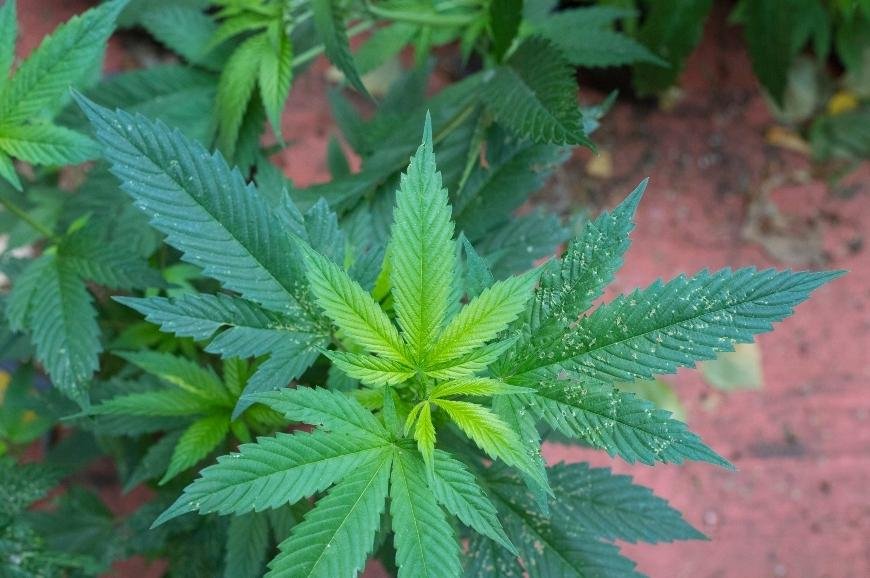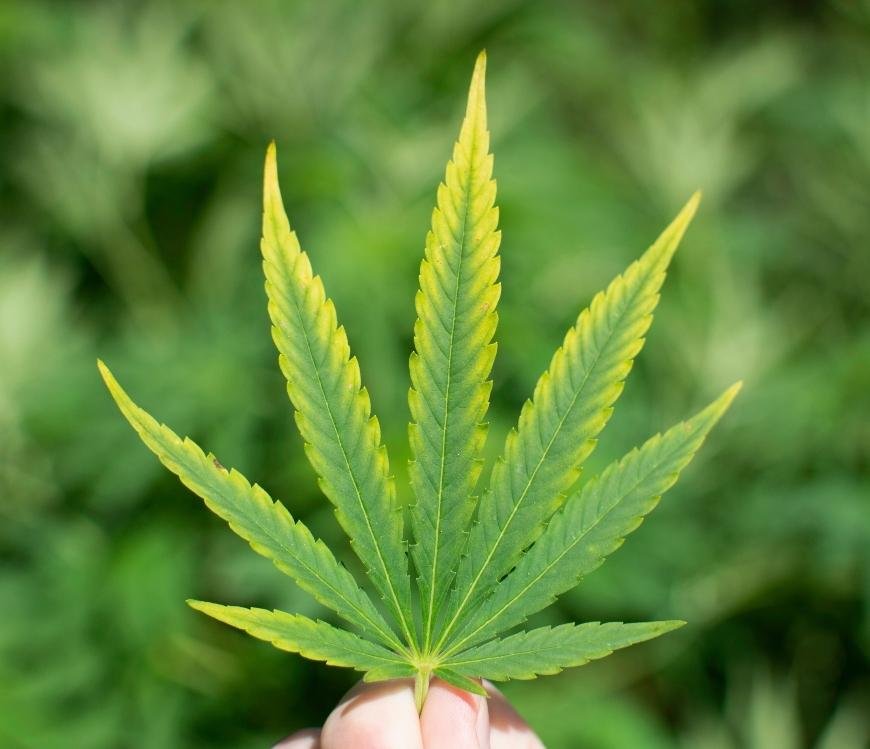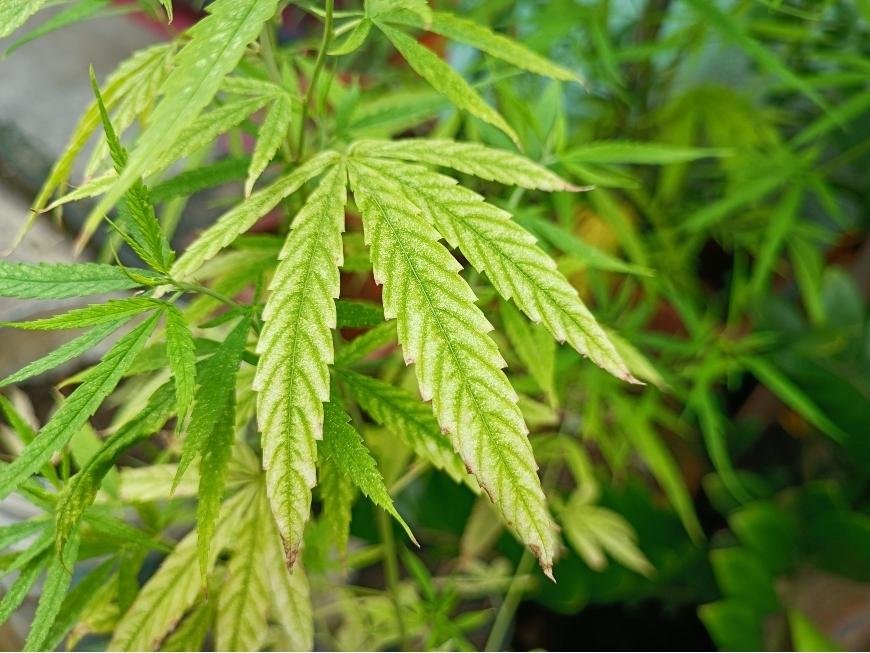How to Fix Magnesium Deficiency in Cannabis Plants
Discover how to fix magnesium deficiency in cannabis plants with our comprehensive guide, covering symptoms, treatments, and prevention for a healthier growth.

When growing cannabis, it's crucial to know how to fix magnesium deficiency in cannabis plants. Magnesium plays a vital role in the overall health and development of marijuana plants, and its deficiency can lead to various problems that may affect yield quality. In this blog post, we'll discuss the symptoms and effects of magnesium deficiency on cannabis plants as well as how to address it through pH adjustments, supplements, and other nutrients.
We will also explore the essential steps for treating this nutrient imbalance by adjusting pH levels, using magnesium supplements, and providing additional nutrients. Furthermore, you'll learn about preventive measures such as maintaining proper soil pH levels and ensuring adequate light and water conditions for your plants.
By understanding how to fix magnesium deficiency in cannabis plants effectively, you can ensure optimal growth conditions for your marijuana crop while avoiding potential issues related to nutrient deficiencies or imbalances.
Table of Contents:
- What is Magnesium Deficiency?
- Symptoms of Magnesium Deficiency
- Role of Magnesium in Cannabis Growth
- Treating Magnesium Deficiency
- Preventing Magnesium Deficiency
- Preventing Magnesium Deficiency
- Frequently Asked Questions How to Fix Magnesium Deficiency in Cannabis Plants
- Conclusion
What is Magnesium Deficiency?
Magnesium deficiency in cannabis plants is a common issue that can lead to various problems during the growth process. Understanding the symptoms, role of magnesium in cannabis growth, and its effects on plant health will help you identify and address this nutrient deficiency effectively.
Symptoms of Magnesium Deficiency
The most noticeable symptom of magnesium deficiency in cannabis plants is yellowing leaves, particularly between the veins while they remain green. This condition, known as interveinal chlorosis, typically starts at the bottom leaves and progresses upwards if left untreated. Other symptoms include:
- Curling or twisting of leaf edges
- Brown spots or patches on affected leaves
- Slow growth rate due to reduced photosynthesis efficiency
- Poor bud development during flowering stage
Role of Magnesium in Cannabis Growth
Magnesium plays a crucial role in several processes within cannabis plants, including:
- Photosynthesis: As a key component of chlorophyll molecules, magnesium enables efficient light absorption for energy production.
- Nutrient uptake: It helps transport essential nutrients like phosphorus and nitrogen throughout the plant.
- Enzyme activation: Magnesium activates many enzymes responsible for vital metabolic reactions such as protein synthesis, carbohydrate metabolism, and cell division.
Effects on Plant Health
If not addressed promptly, magnesium deficiency can have a significant impact on the overall health and yield of your cannabis plants. The reduced photosynthesis efficiency leads to stunted growth, weak stems, and poor bud development during the flowering stage. Additionally, untreated magnesium deficiency makes the plant more susceptible to diseases and pests due to a weakened immune system.
To ensure optimal growth of cannabis plants, it is important to understand the causes and treatments for magnesium deficiency. To properly treat magnesium deficiency, adjusting pH levels and providing additional nutrients are key steps that must be taken.

Treating Magnesium Deficiency
There are several ways to treat this issue and get your plants back on track. In this section, we'll discuss three effective methods: adjusting pH levels, using magnesium supplements, and providing additional nutrients.
Adjusting pH Levels
One of the primary causes of magnesium deficiency is an improper soil pH level. Cannabis plants need slightly acidic soil to optimally absorb essential nutrients like magnesium, so the ideal pH range is between 6.0 and 7.0. When the pH of the soil is not in the desired range, it can impede plants from getting essential nutrients like magnesium.
- To adjust your soil's pH level, start by testing it with a soil test kit or digital meter.
- If the soil is too acidic (below 6), you can add dolomite lime or wood ash to raise its alkalinity.
- If the soil is too alkaline (above 7), try adding sulfur or peat moss to increase acidity.
- After making adjustments, retest your soil's pH after about one week to ensure that it has reached optimal levels for nutrient absorption.
Using Magnesium Supplements
In some cases, simply adjusting the pH may not be enough; you might need to provide additional magnesium directly through supplementation:
- Epsom Salt: Dissolve one tablespoon of Epsom salt in a gallon of water and use it to water your plants. This method provides an immediate boost of magnesium, but be cautious not to overuse Epsom salt as it can lead to other nutrient imbalances.
- Cal-Mag Supplements: Many cannabis growers swear by cal-mag supplements, which contain both calcium and magnesium. These products are specifically designed for cannabis plants and can help correct multiple deficiencies at once.
- Magnesium Sulfate Fertilizers: Some fertilizers contain magnesium sulfate, which is another effective way to supplement this essential nutrient. Be sure to follow the manufacturer's instructions when using these products.
Providing Additional Nutrients
In some cases, a lack of other nutrients may exacerbate or even cause magnesium deficiency in your cannabis plants. For example, an excess of potassium or calcium can interfere with the plant's ability to absorb magnesium properly. To address this issue:
- Analyze your soil or growing medium for potential nutrient imbalances that could be affecting magnesium uptake.
- If you find any issues, adjust your feeding schedule accordingly by reducing excessive nutrients while ensuring adequate levels of all required elements.
- Consider switching to a high-quality cannabis-specific fertilizer that contains balanced amounts of macro- and micronutrients needed for optimal growth and development.
By adjusting the pH levels, using magnesium supplements and providing additional nutrients, you can successfully treat a cannabis plant's magnesium deficiency. To avert recurrence, keep soil pH levels in check and give your plants the right amount of light and water.
Preventing Magnesium Deficiency
Preventing magnesium deficiency in your cannabis plants is essential for their overall health and growth. By taking a few simple steps, you can ensure that your plants receive the right amount of nutrients they need to thrive.
Maintaining Proper Soil pH Levels
Maintaining proper soil pH levels is crucial for preventing nutrient deficiencies, including magnesium deficiency. Cannabis plants prefer slightly acidic soil with a pH level between 6.0 and 7.0. When the soil's acidity or alkalinity moves away from its preferred range, it can prevent absorption of vital nutrients like magnesium.
- Test your soil: Regularly test your growing medium's pH using a soil testing kit or digital meter. This will help you monitor any fluctuations in acidity or alkalinity that could lead to nutrient lockout.
- Adjust as needed: If your soil tests reveal an imbalance, use appropriate amendments such as lime (to raise pH) or sulfur (to lower pH). Be sure to follow product instructions carefully when making adjustments.
- Maintain balance: Continue monitoring and adjusting the soil's pH throughout the growing cycle to maintain optimal conditions for nutrient absorption.
Ensuring Adequate Light and Water
In addition to maintaining proper soil conditions, providing adequate light and water plays a significant role in preventing magnesium deficiency in cannabis plants.
- Light: Cannabis plants require plenty of light to photosynthesize and produce essential nutrients. Ensure your plants are provided with 18 hours of light during the vegetative stage, followed by a 12-hour light/12-hour dark cycle for flowering to optimize photosynthesis and nutrient production. Invest in top-notch luminescence for indoor cultivation to provide a full range of wavelengths.
- Water: Proper watering is crucial for nutrient uptake. Overwatering can lead to root rot and other issues that prevent nutrient absorption, while underwatering may cause stress and reduce growth. Develop a consistent watering schedule based on your plant's needs, adjusting as necessary throughout its life cycle.
Taking these preventive measures will help ensure your cannabis plants have access to the magnesium they need for healthy growth. By maintaining proper soil pH levels and providing adequate light and water, you'll be well on your way to cultivating strong, vibrant cannabis plants free from magnesium deficiency.

Preventing Magnesium Deficiency
By maintaining proper soil pH levels and ensuring your plants receive adequate light and water, you'll set them up for success.
Maintaining Proper Soil pH Levels
To ensure your cannabis plants get the magnesium they need, keep soil pH levels between 6.0 and 7.0. For optimal nutrient uptake, cannabis plants require slightly acidic soil with a pH between 6.0 and 7.0. If the pH falls outside this range, it can hinder nutrient uptake by your plant's roots.
- To maintain proper soil pH levels, test your soil regularly using a soil testing kit or digital meter.
- If needed, adjust the acidity or alkalinity of your growing medium using products like lime (to raise) or sulfur (to lower).
- Be mindful of any additives that could alter the overall balance - many fertilizers are designed to change the composition over time as nutrients are absorbed by plant roots.
Ensuring Adequate Light and Water
In addition to monitoring soil conditions closely, make sure your cannabis plants have access to sufficient light and water throughout their growth cycle:
- Light: Provide ample lighting for optimal photosynthesis - whether you're growing indoors under artificial lights (learn more about cannabis grow lights here) or outdoors in natural sunlight, ensure your plants receive at least 18 hours of light during the vegetative stage and 12 hours during flowering.
- Water: Keep a consistent watering schedule to prevent over- or under-watering - this can lead to nutrient lockout, which prevents magnesium uptake by plant roots. Check the soil's weight to ascertain when your plants need more water using the "lift test" technique.
By following these guidelines and staying vigilant about your plants' needs, you'll be well on your way to preventing magnesium deficiency and enjoying a healthy, bountiful harvest.
Frequently Asked Questions How to Fix Magnesium Deficiency in Cannabis Plants
What are the signs of magnesium deficiency in cannabis plants?
The symptoms start from the bottom of the plant and progress upwards as the deficiency worsens.
How can I fix magnesium deficiency in my cannabis plants?
To fix magnesium deficiency, adjust your soil's pH levels to 6.0-7.0 for optimal nutrient absorption. Apply a magnesium supplement like Epsom salt or Cal-Mag solution to provide additional nutrients needed for healthy growth.
What is the best way to add magnesium to a cannabis plant's soil?
The best way to add magnesium is by using Epsom salt or a Cal-Mag supplement mixed with water according to product instructions. Water your plants thoroughly with this mixture, ensuring even distribution throughout their root system.
Is it possible to over-fertilize with magnesium for cannabis plants?
Yes, over-fertilizing with magnesium can lead to nutrient imbalances and toxicity issues that harm your cannabis plant's health. Always follow recommended dosages when applying supplements and monitor your plant's response closely.
Are there any natural remedies for fixing magnesium deficiency in cannabis plants?
Natural remedies include adding crushed dolomite lime or garden lime into your soil mix before planting; these materials contain both calcium and magnesium which help prevent deficiencies while maintaining proper pH balance.
Conclusion
A lack of magnesium can detrimentally affect the growth and health of cannabis plants, so growers should be aware of its symptoms and role in plant development to take preventive measures. By understanding the symptoms and role of magnesium in plant growth, growers can take steps to treat and prevent deficiencies through adjusting pH levels, using supplements, providing additional nutrients, maintaining proper soil pH levels, ensuring adequate light and water.


























































































































